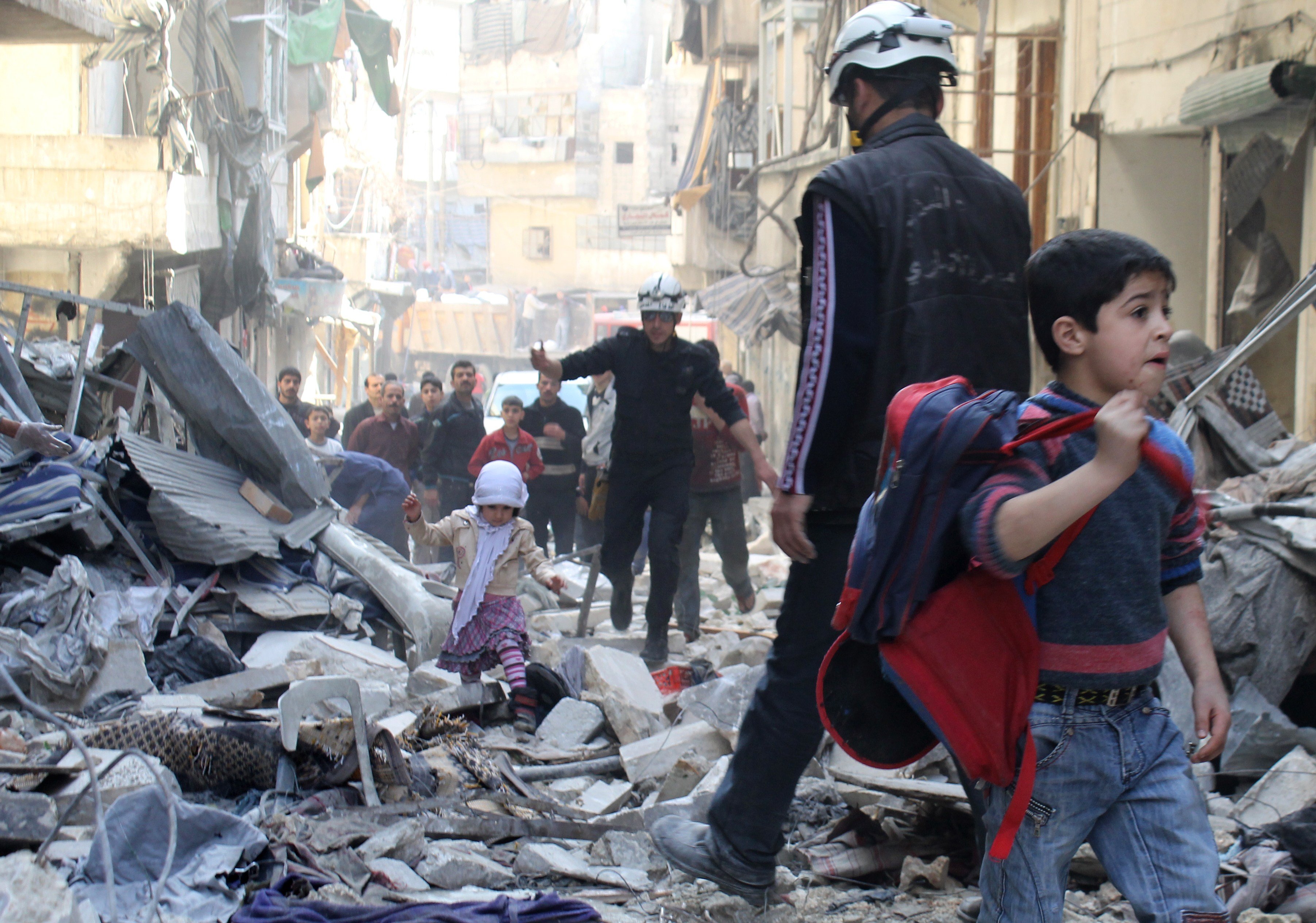
Languages
Available In
After the excessive air strikes with explosive barrels against Aleppo by the government forces, that destroyed large sections of Aleppo’s neighborhoods and killed thousands of victims under absolute international silence especially on the Security Council part, whose phrases about Syria were very general in regard to using this kind of indiscriminate weapons that don’t achieve anything but destruction and killing without any particular and accurate military target;all this enticed the Syrian government to escalate its attacks of the explosive barrels and move to Daraa like what happened in Al-Muzereieb and Tsyl towns.It alsomoved to attack Darriya city in Damascus countryside. During the time in which we made this report we detected that no less than 330 bombs were used against Darriya which killed 29 victims including seven women and seven children. There were also 250 wounded.The notable low number of victims was because of the displacement from Darriy city where 175,000 have left the city while less than 8,000 stayed.
The number of explosive barrels used by the government forces has exceeded 5375 barrels that killed 6493 people, more than 97% of which were civilian.
Moreover, the explosive barrels caused the destruction of no less than 5840 building including schools, hospitals, Mosques, and churches as the explosive barrels have mainly targeted residential areas.
In Darriya city alone there were no less than 150 explosive barrels from 31 Dec, 2013 until 15 Jan, 2014. The armed opposition managed to binge down one of the helicoptersthat was used to launch the explosive barrels, consequently the air strikes ceased for 8 days until 22 Jan, 2014 before it resumed with a rate of 22 bombs per day in the last days of January.
SNHR contacted the field-activist Mohannad Abuzzain from Darriya and he talked to the SNHR about the conditions of the city during that time:
“The air strikes started on 31 Dec, 2013, the first barrel was on Martqla church in the middle of the city and was followed by another three barrels, the air strikes continued for ten days with a rate of 4-6 barrels per day. The residential areas in the south and the middle of city were the primary targets, during that time there was no clashes with the FSA, however the campaign was after the FSA advanced 1 Km on the borders of Dariyya, so it was out of vengeance; Subsequently, rebels managed to neutralize one helicopter so the shelling ceased for 8 days before it resumed worse than before”
“Dariyya has been under siege for more than 15 months were no one was allowed to enter or exit the city, the people’ only resort was the shelters and basement that became their permanent residence.Due to the continuous shelling the number of wounded during the first month amounted to more than 60 including women and children, in addition to a lot of people whom we had to extract from underneath the rubbles as they were suffering from several bruises, also the shelling targeted some of the rebels’ vital centers such as the police station, the media office, and the restaurant that was affiliated to them.However the residential areas were still the main target which contributed in increasing the numbers of woundedwomen and children”.
Although a unanimous resolution were adopted at the Security Council on 22 Feb, 2014 to stop immediately the indiscriminate use of weapons in residential areas, and referred specifically to the explosive barrels, nothing changed, even though the resolution stated that there will be necessary procedures in case of lack of commitment to the resolution.
Hosam, a media activist from Darriya city who works for SNHR, says:
“This ongoing campaign started with the end of the year on 31 Dec, 2013, the campaign was slow-paced at the beginning before it escalated gradually with the time. Air strikesare targeting mainly residential areas more than rebels areas as the field-hospital was targeted several times as well as the police station and central kitchen. Dariyya has become a weapon laboratory where the regime tests all of its weapons; nonetheless, the explosive barrels had the most destructive power, the buildings that have two floors were destroyed completely if it was hit by a barrel. The problem is the siege that prevented the civilians from leaving considering that the shelling was usually between 9 AM and 6 PM which is the time when people usually move around the city. The destruction increased significantly with the start of this year until the middle of February, the destroyed buildings were 50% of the total number of buildings, however the buildings that weren’t destroyed completely are not suitable for living from an engineering standpoint”.
//


